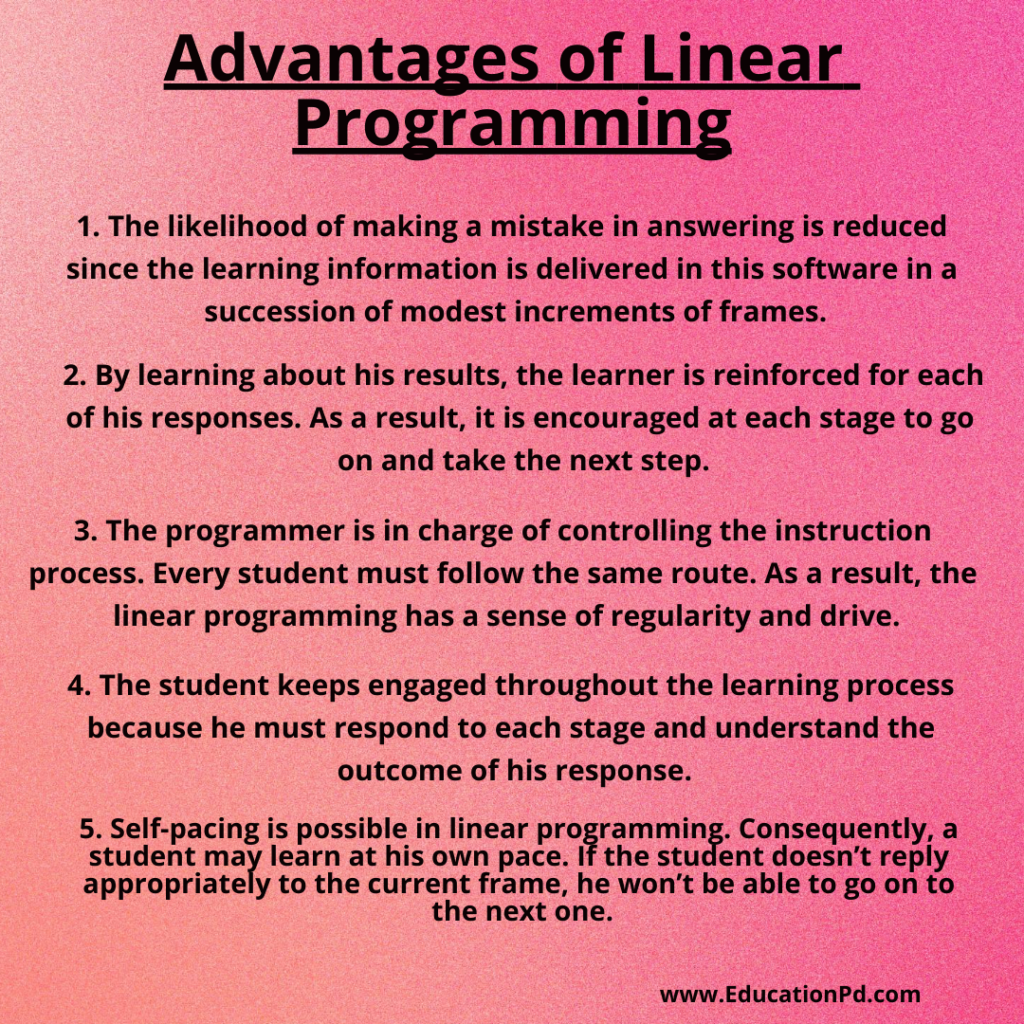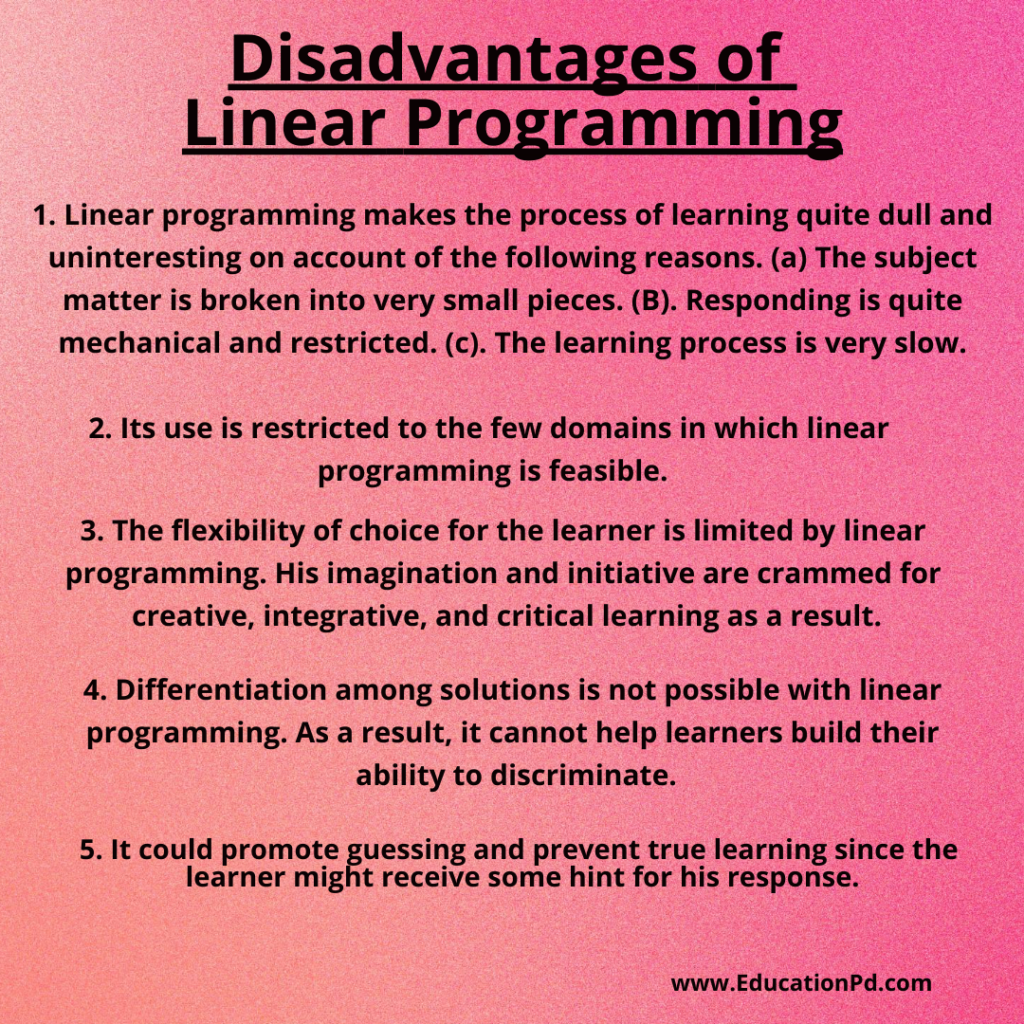Back to: Educational Technology in Education B.ed Notes, M.A Notes, IGNOU Notes
Advantages and Disadvantages of Linear Programming
Advantages of Linear Programming
- The likelihood of making a mistake in answering is reduced since the learning information is delivered in this software in a succession of modest increments of frames.
- By learning about his results, the learner is reinforced for each of his responses. As a result, it is encouraged at each stage to go on and take the next step.
- The programmer is in charge of controlling the instruction process. Every student must follow the same route. As a result, the linear programming has a sense of regularity and drive.
- The student keeps engaged throughout the learning process because he must respond to each stage and understand the outcome of his response.
- Self-pacing is possible in linear programming. Consequently, a student may learn at his own pace. If the student doesn’t reply appropriately to the current frame, he won’t be able to go on to the next one.
- Thus, linear programming guides a learner from starting to terminal behaviour gradually but steadily.

Disadvantages of Linear Programming
- Linear programming makes the process of learning quite dull and uninteresting on account of the following reasons. (a) The subject matter is broken into very small pieces. (B). Responding is quite mechanical and restricted. (c). The learning process is very slow.
- Its use is restricted to the few domains in which linear programming is feasible.
- The flexibility of choice for the learner is limited by linear programming. His imagination and initiative are crammed for creative, integrative, and critical learning as a result.
- Differentiation among solutions is not possible with linear programming. As a result, it cannot help learners build their ability to discriminate.
- It could promote guessing and prevent true learning since the learner might receive some hint for his response.
